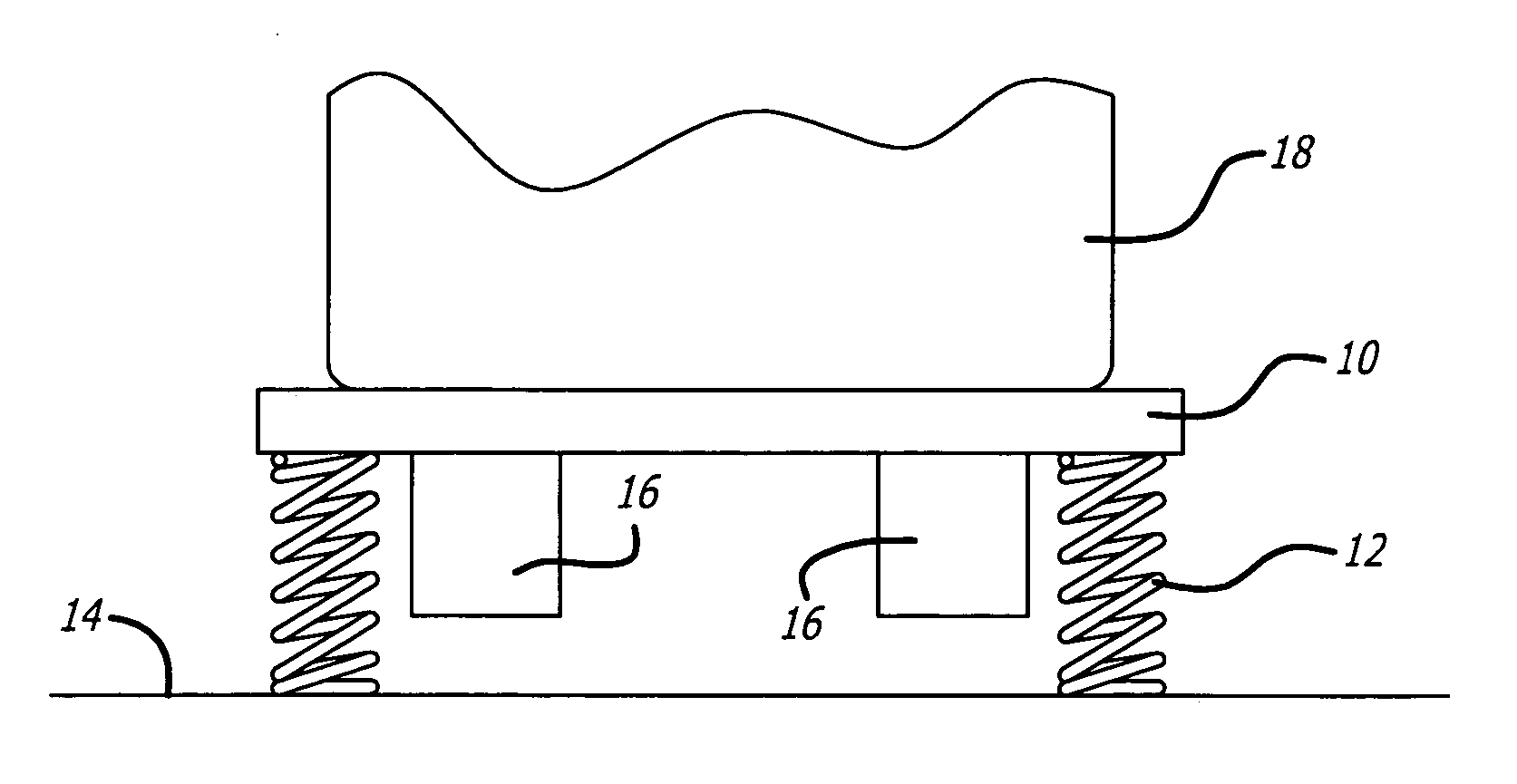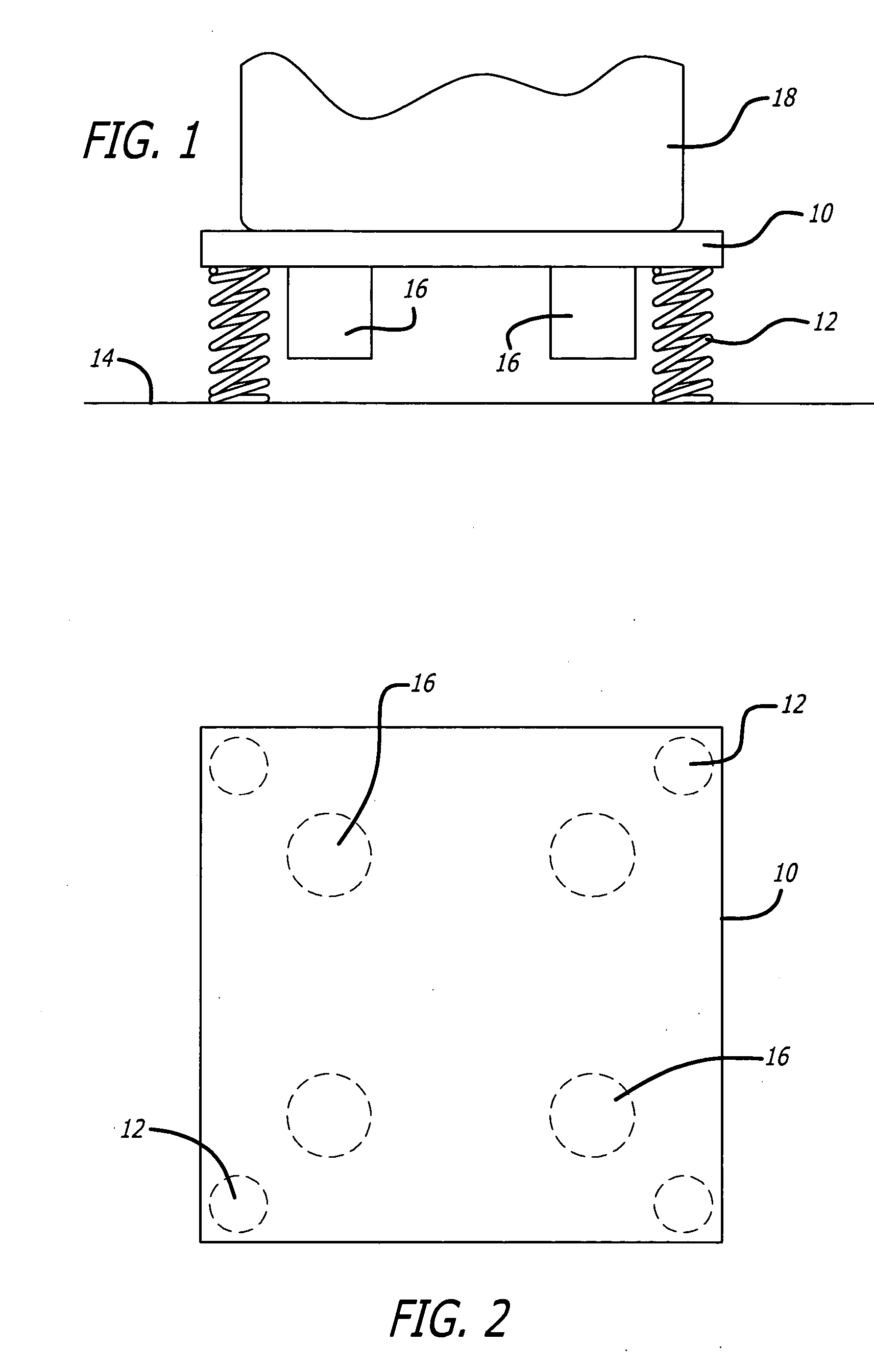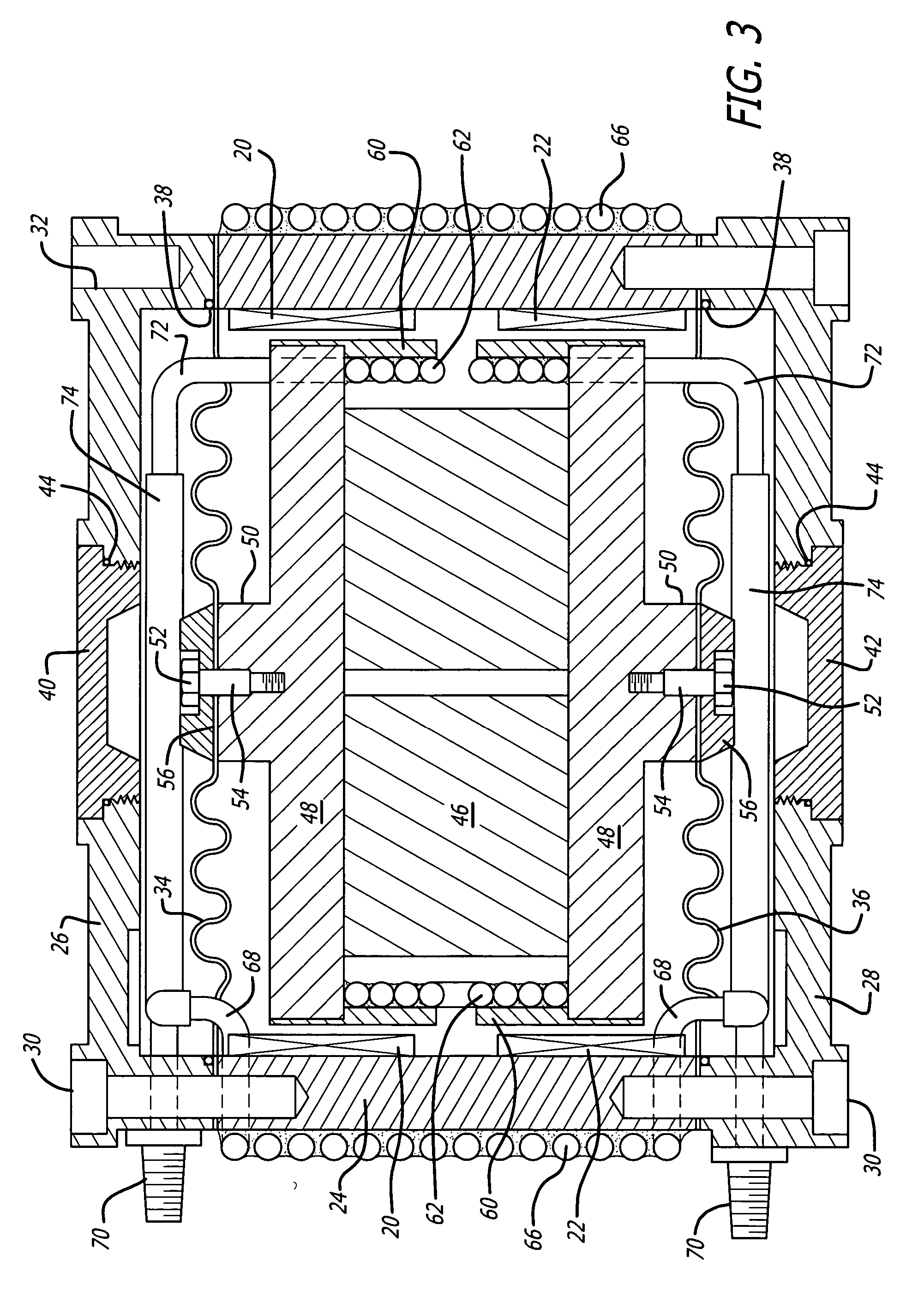Shakers and methods of testing
a shaker and shaker technology, applied in the direction of mechanical vibration separation, fluid tightness measurement, instruments, etc., can solve the problems of limiting the application and efficiency of use of shakers, limiting the utility of shakers, and normaly not being sealed devices
- Summary
- Abstract
- Description
- Claims
- Application Information
AI Technical Summary
Problems solved by technology
Method used
Image
Examples
Embodiment Construction
[0017] The present invention comprises a sealed, liquid-cooled shaker not having a conventional shaker table to which an article to be tested is placed, but rather having a housing to which the vibratory forces are coupled. Thus the housing of one or more such shakers, each of which may be substantially smaller than the article to be tested, may be coupled directly to the article to be tested, or alternatively may be coupled singularly or in plurality to a suitable table or platform to which the article to be tested is connected. By way of example, referring to FIG. 1, a table 10 supported by coil springs 12 on a suitable support surface 14 is schematically illustrated. Here a plurality of shakers 16, four in this specific embodiment (see FIG. 2 also), are used to impart vibratory forces to the table 10 and thus to the object 18 being tested. Since each shaker is, capable of generating very substantial vibratory forces for its size and frequently large objects are only tested at rel...
PUM
 Login to View More
Login to View More Abstract
Description
Claims
Application Information
 Login to View More
Login to View More - R&D
- Intellectual Property
- Life Sciences
- Materials
- Tech Scout
- Unparalleled Data Quality
- Higher Quality Content
- 60% Fewer Hallucinations
Browse by: Latest US Patents, China's latest patents, Technical Efficacy Thesaurus, Application Domain, Technology Topic, Popular Technical Reports.
© 2025 PatSnap. All rights reserved.Legal|Privacy policy|Modern Slavery Act Transparency Statement|Sitemap|About US| Contact US: help@patsnap.com



